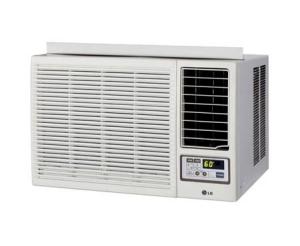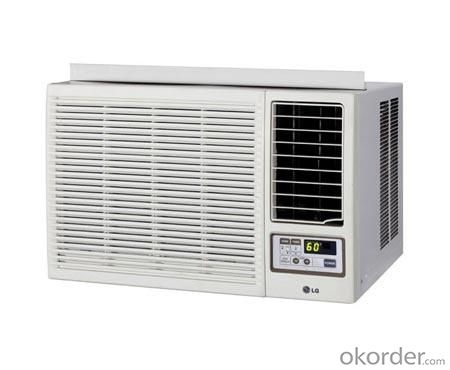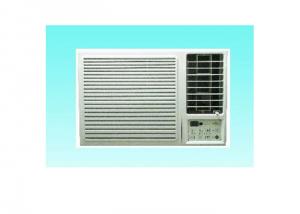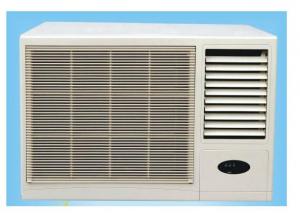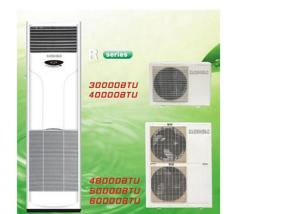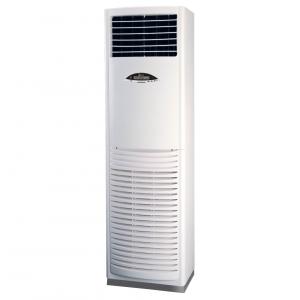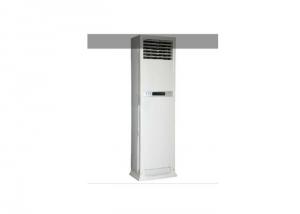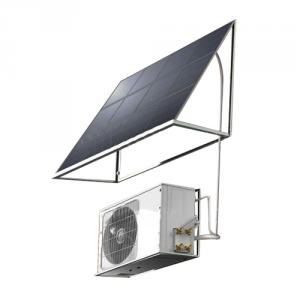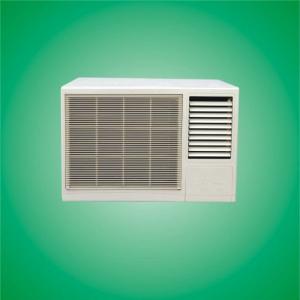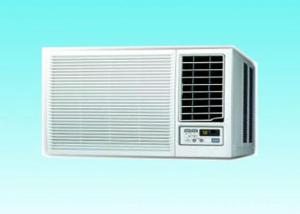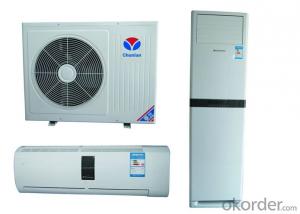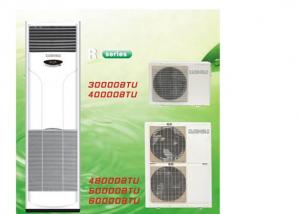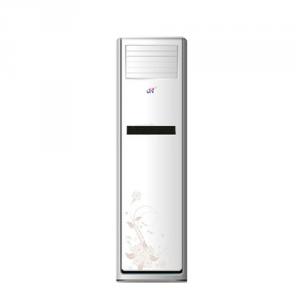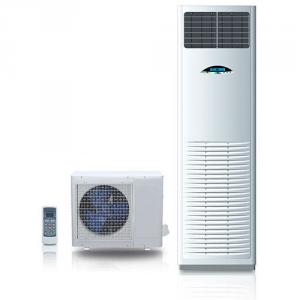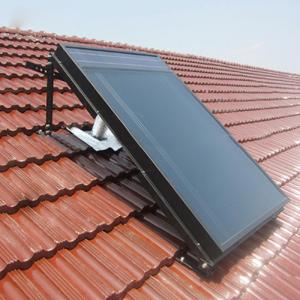18000Btu Window Unit Air Conditioner
- Loading Port:
- China Main Port
- Payment Terms:
- TT or LC
- Min Order Qty:
- 100 Units unit
- Supply Capability:
- 4800 Units Per Day unit/month
OKorder Service Pledge
OKorder Financial Service
You Might Also Like
1.Famous brand compressor
2.9000BTU-24000BTU
18000Btu Window unit Air Conditioner:
(1)Galvanized outdoor unit or plastic outdoor unit for anti-corrosion
(2)Wide voltage display:187V-240V
(3)All products are high quality with famous brand compressor, Hitachi, Toshiba, Sanyo, Panasonic, Mitsubishi, Samsung,LG.
(5)Cooling or cooling and heating are available
(6)9000BTU.12000BTU.18000BTU,24000BTU
(7)More than 10 meters remote control distance
(8)Flat panel for easy cleaning,washable plastic filter and horizontal auto louver
(9)Optional colour: red,black, grey white and pea green
(10)Refrigerant: R22,R407C or R410a for option
(11)50/60HZ and T1 ambient/T3 ambient for option
(12)Option for auto restart function
- Q: How can I reduce the noise from my air conditioner?
- There are several steps you can take to reduce the noise from your air conditioner: 1. Clean and maintain your air conditioner: Over time, dust and debris can accumulate in the unit, causing it to work harder and create more noise. Regularly clean the air filters, condenser coils, and fan blades to ensure smooth and quiet operation. 2. Insulate the unit: Use soundproofing materials such as acoustic foam or insulation blankets to wrap around the air conditioner. This will help absorb and dampen the noise produced by the unit. 3. Check for loose or worn parts: Inspect the fan blades, motor mounts, and other components for any loose or damaged parts. If you find any, tighten or replace them as necessary to eliminate rattling or vibrating noises. 4. Install anti-vibration pads: Place rubber or neoprene pads under the air conditioner to minimize vibrations transmitted to the surrounding surfaces. This can significantly reduce the noise level. 5. Create a sound barrier: If possible, place a barrier or soundproof curtain between the air conditioner and the area where you want to reduce the noise. This can help block and absorb sound waves, making the noise less noticeable. 6. Consider relocating the unit: If the noise from your air conditioner is still bothersome even after trying the above methods, you may want to consider moving the unit to a less intrusive location. This could be a spot further away from living areas or bedrooms, or even outside if feasible. Remember, it's essential to prioritize safety and consult any necessary professionals when working with your air conditioner.
- Q: Should I use a fan to circulate the air from my air conditioner?
- Yes, using a fan to circulate the air from your air conditioner can be beneficial. While the air conditioner itself cools the air, a fan helps to distribute the cooled air more evenly throughout the room, ensuring that every corner receives the cooling effect. This can help improve the overall comfort level in the room and reduce any hot spots or uneven cooling. Additionally, using a fan can help increase the efficiency of your air conditioner by helping to circulate the cooled air more effectively and decreasing the workload on the air conditioner. However, it is important to note that using a fan alone without an air conditioner may not provide the desired cooling effect, especially during extremely hot weather.
- Q: Household air conditioning classification
- According to the classification of refrigerants, fluorine, trumpets. According to the energy points: electric air conditioner, air, fuel gas air conditioning, the solar energy air conditioning. Household electricity air conditioning, fission, one-piece. Style: divided into hanging, cabinet type, type suction a top. Air conditioning: divided into two categories: fixed frequency and frequency conversion.
- Q: Household air conditioning use a fixed frequency of good or a good have what distinction
- Fixed frequency of cheap, thermostatic temperature difference is not comfortable. Frequency conversion of expensive, thermostatic temperature comfortable. Province electricity, the frequency of a little, want to open for a long time to just have difference (open every day 10 hours or more a month or two). Fixed frequency and frequency conversion price difference is too much, not for a long time to open selected frequency of economic, money want to be more comfortable if it choose frequency conversion.
- Q: Ordinary household air conditioner can heating?
- The higher the temperature is hot with anger, of course, and the wind speed and air volume Settings can also cause the temperature of the air
- Q: What is the working principle of air conditioning?
- In simple terms, is the indoor quantity of heat, through the refrigerant to outdoor putting off Detailed process of refrigerant in the evaporator (indoor machine) evaporation heat, namely will indoor heat absorbed (refrigerant why will evaporate, because its boiling point, like liquefied petroleum gas, liquid in the flask, leaking out to turn into a gas) Absorb the heat, and then to the compressor, through compressed into high temperature and high pressure gas, then to the condenser condensing (outdoor), condensation is the process of heat release, and then liquefaction, under certain pressure, otherwise not liquefaction After liquefaction, refrigerant in capillary pressure, and then to the evaporator (indoor machine) evaporation heat, so the cycle, became a refrigeration system Summary, evaporation heat, condensation heat, evaporation heat, condensation heat... The cycle
- Q: Maintenance of household air conditioning need tools books have?
- Everyone is said with air conditioning, right. Repair tools for the first air conditioning is clip-on table, this is to add fluoride, judge compressor must tools, fluoride, fluoride cans, multimeter, welding torch, cutter, tube expander, not to mention the other small tools.
- Q: How can I clean the air vents of my air conditioner?
- To ensure the cleanliness of your air conditioner's air vents, the following steps can be taken: 1. Prior to commencing the cleaning process, it is crucial to ensure the air conditioner is turned off and disconnected for safety reasons. 2. Identify the air vents on your air conditioner, which are typically located on either the front panel or the unit's sides. 3. Utilize a soft brush or a vacuum cleaner equipped with a brush attachment to eliminate any loose dust or debris from the vents. Employ a gentle brushing or vacuuming motion in a downward direction to prevent pushing the dirt further into the vents. 4. In the case of more stubborn dirt or grime, a mixture of mild detergent and water can be employed. Dampen a soft cloth or sponge with the solution and wipe the vents to eliminate any remaining dirt. It is crucial to exercise caution and ensure the vents are not excessively saturated with water, as this could potentially cause damage to the unit. 5. If there are any removable vent covers or grilles, they should be detached and cleaned separately. Soak them in warm soapy water, thoroughly rinse them, and allow them to air dry before reattaching. 6. Following the cleaning process, it is important to allow the vents to completely dry before switching on the air conditioner. 7. Additionally, it is advisable to regularly clean or replace the air filter to maintain optimal air quality and prevent the accumulation of dust and dirt in the vents. By adhering to these steps, you can ensure that your air vents remain clean and free from dust and debris. This will enable your air conditioner to function at its best, providing you with clean and fresh air for your environment.
- Q: 28 square should use how much home air conditioning
- Air conditioning number, the former refers to the input power, including compressor, fan motors and electrical control part, due to different brand their specific system and electric control design, the output of the refrigerating capacity of different so the refrigerating capacity in terms of output powe
- Q: Can an air conditioner be used to cool multiple rooms or a whole house?
- Yes, an air conditioner can be used to cool multiple rooms or even a whole house. There are two main types of air conditioning systems that can achieve this: central air conditioning and ductless mini-split systems. Central air conditioning is a system that uses ductwork to distribute cool air throughout the entire house. It consists of a central unit that cools the air and then sends it through the ducts to each room. This type of system is typically installed during the construction of the house or as a retrofit. It allows for consistent cooling in every room and provides the convenience of controlling the temperature from a central thermostat. Ductless mini-split systems, on the other hand, are an excellent option for cooling multiple rooms or specific zones within a house. These systems consist of an outdoor unit and one or more indoor units, which are mounted on the wall or ceiling in each room. Each indoor unit operates independently, allowing you to control the temperature individually for each room or zone. Ductless mini-split systems are versatile and can be a cost-effective solution for homes without existing ductwork. In both cases, it's important to consider the size and capacity of the air conditioner to ensure it can adequately cool the entire space. Consulting with a professional HVAC technician is recommended to determine the best system for your specific needs and to ensure proper installation.
1. Manufacturer Overview
| Location | Henan,China (Mainland) |
| Year Established | 2012 |
| Annual Output Value | Below US$1 Million |
| Main Markets | 20.00% South America 10.00% Eastern Europe 10.00% Africa 10.00% Mid East 10.00% Western Europe 10.00% Northern Europe 10.00% South Asia 10.00% North America 10.00% Domestic Market |
| Company Certifications |
2. Manufacturer Certificates
| a) Certification Name | |
| Range | |
| Reference | |
| Validity Period |
3. Manufacturer Capability
| a) Trade Capacity | |
| Nearest Port | Shanghai,Tianjin,Qingdao |
| Export Percentage | 31% - 40% |
| No.of Employees in Trade Department | 3-5 People |
| Language Spoken: | English, Chinese |
| b) Factory Information | |
| Factory Size: | |
| No. of Production Lines | |
| Contract Manufacturing | |
| Product Price Range | |
Send your message to us
18000Btu Window Unit Air Conditioner
- Loading Port:
- China Main Port
- Payment Terms:
- TT or LC
- Min Order Qty:
- 100 Units unit
- Supply Capability:
- 4800 Units Per Day unit/month
OKorder Service Pledge
OKorder Financial Service
Similar products
Hot products
Hot Searches
Related keywords
